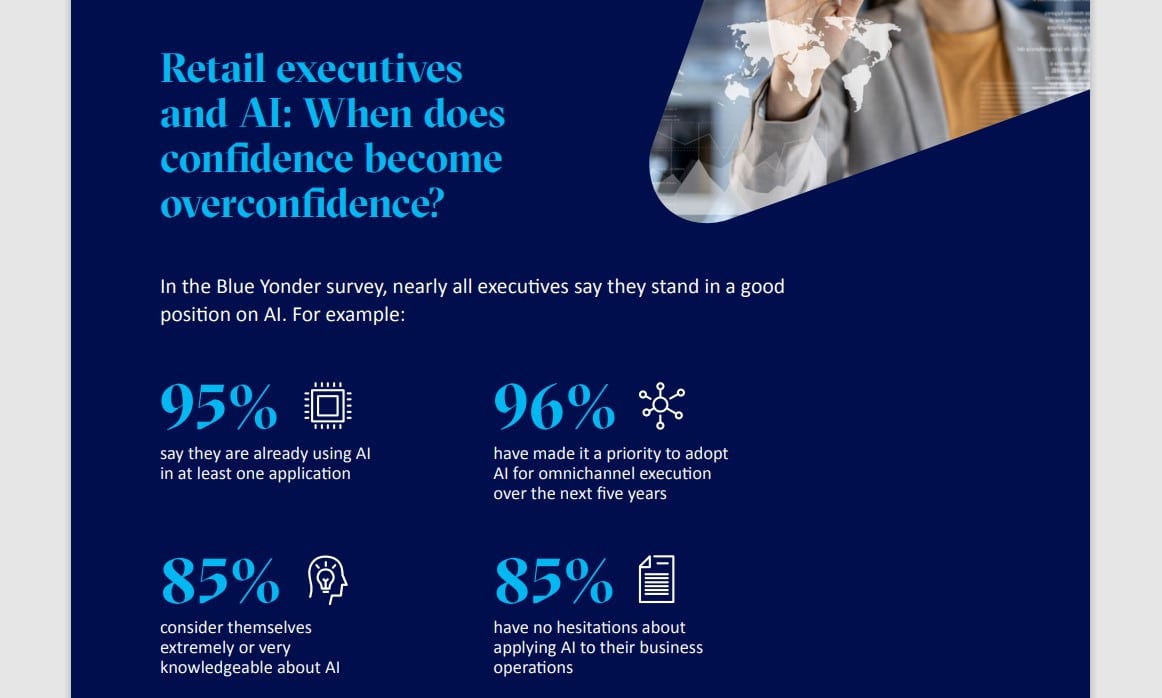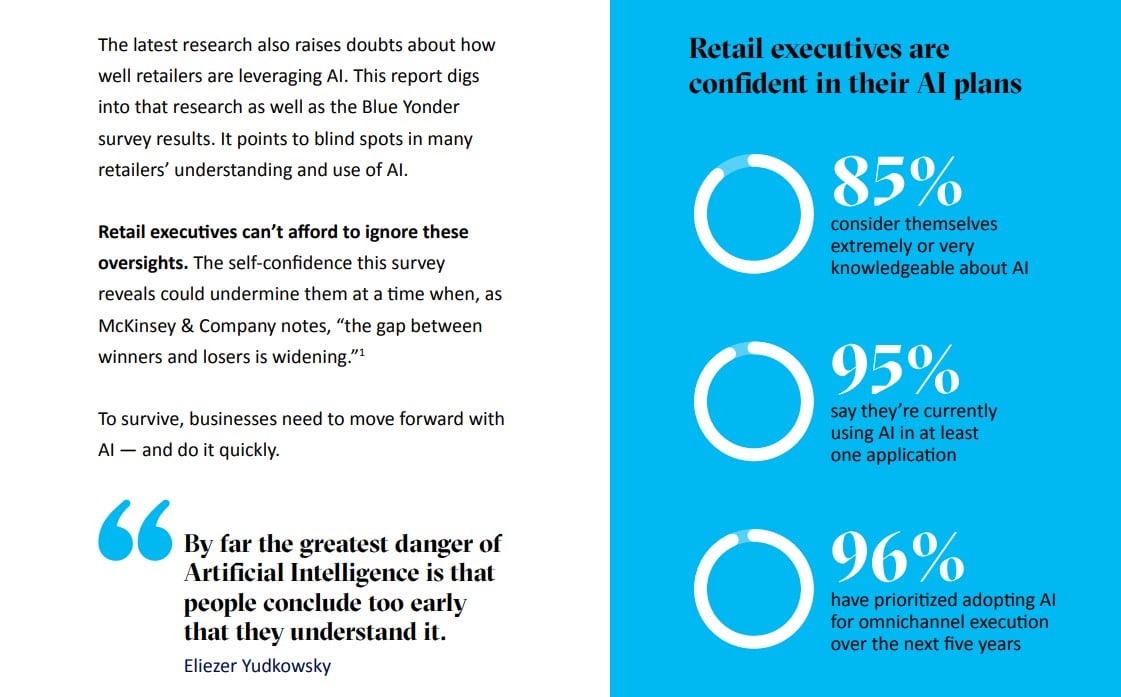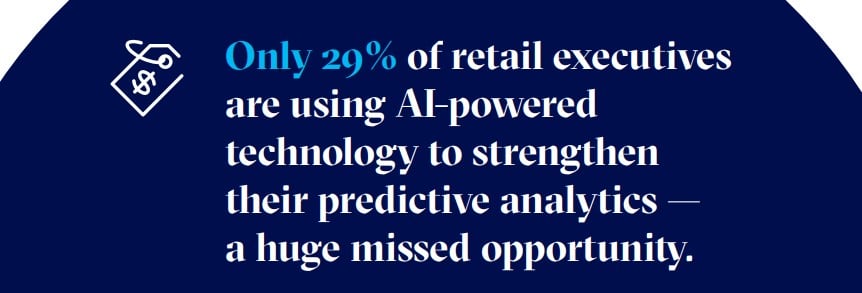If there is one word you don’t hear much when it comes to AI in business, it’s “certainty”—if anything, the opposite is usually the case. But that’s how many retail leaders feel about their AI acumen, according to new research from supply chain solutions firm Blue Yonder, which finds that almost all retail execs feel confident in their command of AI. The researchers assert that retailers are overconfident in AI use and, ultimately, are missing crucial opportunities.
The firm’s new Are Retailers Prepared for the AI Era? Report, based on its survey of 150 retail leaders, reveals that 85 percent of execs surveyed say they are extremely or very knowledgeable about AI and have no hesitations about applying AI to their business operations. The opportunities eluding them relate to optimizing inventories and estimating accurate shipping dates, to name a few—which could lead to disappointment customers as the holiday-shopping season kicks into gear.

“Today, there is a proliferation of AI solutions available to retailers, but understanding general technology concepts is not the same thing as knowing which AI-enabled product or service is best suited for individual retailing needs,” said Srinivas Pujari, corporate vice president at Blue Yonder, in a news release. “Retailers who are innovating with AI will leave their competitors behind, especially those who deploy the most efficient solutions that best meet their customer needs. Retail executives cannot afford to be overconfident in their AI strategy.”
Additional findings from the report include:
- 95 percent say they are already using AI technology in at least one application.
- 96 percent have made further AI adoption a priority going forward.
Retailers surveyed say they are very knowledgeable about AI, but in truth they lack understanding about the different types of AI, or ways to utilize existing tools. While many are using AI to enhance supply chain and logistics, the survey found that not many are using it to enhance omnichannel execution.

As an example, retailers surveyed are also not using AI to its full potential when it comes to inventory and fulfillment:
- 26 percent use AI for markdown predictions and avoidance.
- 18 percent use AI to optimize their inventory by keeping their dynamic safety stock up to date.
- 16 percent apply AI to improve the accuracy of their estimated ship dates.
- 7 percent use AI to improve order picking accuracy.
Additionally, the survey showed that these execs cite inaccurate inventory counts as the number one cause of poor customer experience. However, fewer than half apply AI to fulfillment optimization (48 percent), labor scheduling and workforce optimization (45 percent), demand forecasting (42 percent), or inventory placement (42 percent).
“The costs of these missed opportunities will prove painful for many retail businesses,” said Pujari. “The top 10 percent of retailers already create 70 percent of the sector’s profit, and those large retailers stand at the leading edge of the AI revolution, so companies that don’t embrace AI will almost certainly fall behind. Blue Yonder can help retailers use AI and ML to make proactive business decisions using powerful insights from deep volumes of data.”

The biggest barriers to AI adoption in their organizations, according to the retail executives surveyed include:
- 45 percent: Security risks
- 42 percent: Budget limitations
- 41 percent: Lack of trust in output or recommendations
- 39 percent: Talent limitations (skill, availability, etc.)
- 37 percent: Lack of organizational strategy or clear use case
- 26 percent: Lack of clean unified data/complex data environments
- 25 percent: Lack of organizational knowledge
Download the full report here.
The survey, conducted in partnership with a third-party company, polled 150 retail executives in August 2023 through an online, invitation-only survey. Among respondents, 2 percent work in companies with annual revenue of $250 million to $500 million; 22 percent, $500 million to $1 billion; 67 percent, $1 billion to $10 billion; and 9 percent, more than $10 billion. Respondents were Director level and above, with 22 percent being C-suite level. And about half were grocery retailers (49 percent), with the rest being hardline retailers (36 percent) and softline retailers (15 percent).








